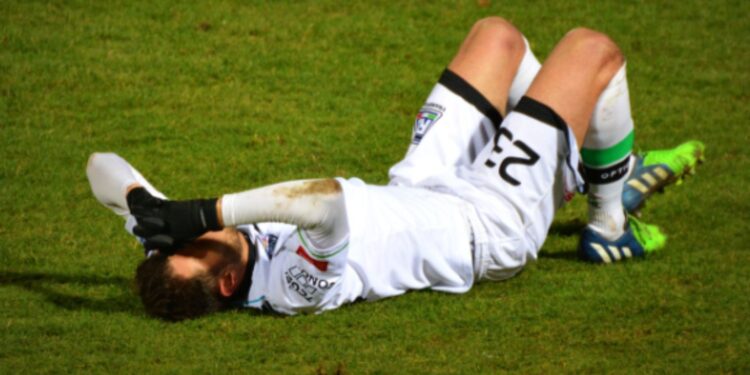Facing an injury can be a daunting setback for any athlete, but the road to recovery offers a chance to come back stronger. This article dives into the critical steps, strategies, and motivational elements necessary to safely and effectively re-enter the sporting world post-injury. This guide aims to equip athletes, coaches, and sports enthusiasts with the knowledge to handle injuries with resilience, ensuring a balanced and scientifically informed approach to rehabilitation and reintegration into sports. Whether you’re a weekend warrior or a professional athlete, understanding the nuances of recovery will help you regain your strength, confidence, and performance level, allowing you to return to the sports you love with renewed vigor and a deeper appreciation for your body’s capabilities and resilience.
Understanding Your Injury
The first step on the path to recovery begins with a comprehensive understanding of your injury. This includes knowing the nature, extent and recommended healing process. By consulting with healthcare professionals and undergoing necessary evaluations, athletes can gain insights into their specific injuries, setting the stage for a tailored and effective rehabilitation plan. Knowledge about the injury not only aids in setting realistic recovery goals but also helps in mentally preparing for the challenges ahead.
One of the critical aspects of understanding your injury is recognizing the importance of rest. While athletes might be eager to jump back into action, acknowledging the body’s need for healing is crucial. This period of rest is not just about physical recovery but also offers an opportunity to reflect on one’s training, performance, and methods to prevent future injuries. Engaging in activities that maintain mental health during this time is equally important. Consider contacting a personal injury law firm if the injury was caused due to negligence, ensuring that you have the resources needed to focus on your recovery. It’s vital to remember that the recovery process is unique for each individual, and acknowledging the impact of the injury on one’s physical and mental state is essential.
Structuring Your Rehabilitation Plan
Developing a structured rehabilitation plan is essential for a successful return to sports. This plan should be designed with input from medical professionals, physical therapists, and, if applicable, your coach. A well-structured program will address not only the physical healing of the injury but also incorporate strength training, flexibility exercises, and possibly sports psychology sessions to ensure mental readiness. The plan should be progressive, starting with gentle movements and gradually increasing in intensity as the athlete’s condition improves.
The role of a support system during rehabilitation cannot be overstated.

Family, friends, teammates, and coaches can provide the emotional encouragement needed to push through difficult moments. Additionally, fellow athletes who have successfully navigated their injury recovery process can offer valuable advice and inspiration. This period is also an opportunity to learn new skills or focus on enhancing other areas of performance, such as tactical knowledge or technical skills within the sport.
Nutrition and Recovery
Nutrition plays a pivotal role in the healing process. A diet rich in proteins, vitamins, and minerals supports tissue repair and reduces inflammation. Athletes should work with a nutritionist to tailor their diet to meet the specific needs of their recovery process. Hydration is equally important, as water plays a key role in nutrient transport and waste removal.
Supplementing your diet with specific nutrients, under professional guidance, may also speed up the healing process. For example, omega-3 fatty acids have been shown to reduce inflammation, while vitamin C supports collagen production for tissue repair. However, supplements should never replace a balanced diet and should only be considered as an adjunct to natural food sources.
Mental Fortitude and Patience
Mental resilience is as critical as physical recovery. Athletes often face emotional and psychological challenges such as frustration, anger, or doubt during their rehabilitation. It’s important to address these feelings and find healthy outlets for them. Engaging in meditation, visualization techniques, or speaking with a sports psychologist can provide significant benefits.
Patience plays a vital role in recovery. Returning to sports too quickly increases the risk of re-injury or developing compensatory injuries. It’s important for athletes to listen to their bodies and medical advisors, understanding that recovery cannot be rushed. Celebrating small milestones can help keep spirits high and provide motivation through the recovery phase.
The Return to Sports
Once medical professionals give the green light, reintegrating into sports should be gradual. Athletes might start with non-contact drills or modified training sessions before returning to full-intensity practices and competition. During this phase, continuous assessment by the rehabilitation team ensures the athlete is recovering as expected without signs of regression.
The psychological aspect of returning to sports is crucial. Athletes might experience a fear of re-injury, which can impact their performance. It’s important to work through these fears constructively, using techniques learned during the rehabilitation process. The return to sports is not just a physical triumph but a psychological victory, marking the athlete’s resilience, dedication, and passion.

Returning to sports after an injury is a journey that requires patience, dedication, and a well-structured plan. By understanding the injury, following a structured rehabilitation program, maintaining proper nutrition and mental fortitude, and gradually reintegrating into sports, athletes can come back stronger and more resilient than ever before. With the right mindset and support system, facing adversity can be turned into an opportunity for growth and transformation.







